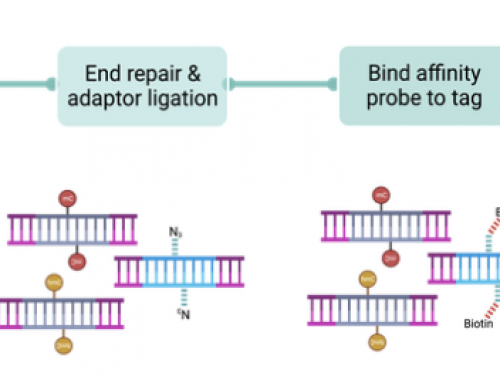I thought I’d follow Keith’s lead and make my own suggestions for what might be revealed during Illumina’s presentation at this years JPMorgan event. All the great announcements, by Illumina and everyone else, used to be made at the AGBT meeting in February and that gave a real sense of excitement when travelling to Florida. However since next-generation sequencing became big business all the cool stuff is announced to investors instead.
Updated X-Ten?
The X platform was a genuine surprise bringing in the era of the “$1000 genome”. This surprise had negative consequences for Illumina as similarly to the big improvements in HiSeq yields a few years’ earlier, users had trouble keeping the instruments busy and reagent pull-through dropped. A big drop in the cost per genome would be surprising, but perhaps a move to allowing other library types to be run is on the cards? This would bring the costs of big projects down significantly, but might also destroy the market for individual instruments – why buy a box when an exome might only cost $200 via the Broad’s Genomic services on X-Ten for instance?
A rapid HiSeq 4000?
HiSeq 2000 got the 2500 upgrade which included the “rapid” run. I was never a big fan since most of our work is run on the standard 8 lane high-output flowcells. However for people with non-standard run types the 2 lane rapid run was helpful – unfortunately it is also much more expensive per base. Switching between the rapid and high-output run modes requires a half days washing of the instrument which usually led to a days downtime. However with paired-end 125bp runs taking 10 days this was often worth the pain.
HiSeq 4000 is the cheapest way to generate sequences for ChIP-Seq and RNA-seq experiments with a cost as low as $2 per million reads. But this is only the case if you are going to run the nuts off the instrument due to its very high maintenance costs, and the need to fill 8 lanes on each flowcell. NextSeq is probably three times faster than HiSeq 4000, only 1 sample needs to be run, and the cost is still relatively low but it is 2-3 times the cost per million reads.
So a rapid mode on HiSeq 4000 might be useful for some but I’d be looking towards a NextSeq if I knew I was only going to use the very expensive 4000 for rapid runs. For clinical work where data volumes are critical but sample numbers are low rapid mode may be hitting the sweet spot. And as Illumina is more and more focused on the clinic, cancer in particular, this may be the driving force behind any launch of HiSeq 4000 rapid.
Update on project Firefly?
Undoubtedly we’ll hear about the launch of Firefly. OmicsOmics, GenomeWeb and several others have covered this, and I’d posted after Jay Flatley’s 2016 AGBT talk. The project has been running internally with little noise, although a recent job Ad highlighted by Allseq.com on LinkedIN suggest a launch this year.
Illumina nanopore?
Oxford Nanopore are doing smashing work on the development of the MinION, and the other family members too: PromethION, SmidION, and MinION DX. Illumina will have seen that the writing is on the wall for some application areas. Right now the best genome (according to Biomickwatson) is a mix of Illumina and Nanopore data. It remains to be seen how soon the Illumina data will no longer be needed to produce the “best” genome, although I suspect it’ll be sometime before Illumina data can be replaced for the “cheapest” genome.
@froggleston @pathogenomenick @coregenomics @Clive_G_Brown best cost/completeness is Illumina+nanopore which I said over a year ago 🙂
— Mick Watson (@BioMickWatson) January 3, 2017
Illumina has been a big provider of RNA-Seq data mainly through mRNA-Seq, but their technology has enabled methods to look at non-polyadenyltated transcripts, RNA structure, RNA:Protein binding, translation rates (via ribosomal footprinting or similar), etc, etc, etc. However the release of direct RNA-Seq from ONT, and the possibility of 10 million reads per flowcell mean a lot of the new developments are likely to be made on a non-Illumina platform. However I doubt we’ll move away from Illumina for a long-time yet for DGE analysis.
@coregenomics @nanopore only a beta out, should be 10s of millions later hits year. remember they’re generally full length.
— Clive G. Brown (@Clive_G_Brown) January 3, 2017
If Illumina announced an SBS or Firefly nanopore combo to take ONT head-on that would be truly exciting. My 2013 April fools nanopore idea may not have been so crazy after all…I should have tried to find some investors in Sunny California!
Portable MiSeq?
I sketched out an idea for a microfluidic MiSeq lab-on-a-chip and posted this on Twitter earlier this week.
What’s new for 2017…MiSeq on-a-chip?
1 million reads.
Disposable.
Portable.
iPhone compatible? pic.twitter.com/0XK9M2Fttk— James Hadfield (@coregenomics) January 3, 2017
 For users who are not interested in large data volumes, but who would rather have rapid results and an element of portability the idea may not be entirely crazy. Currently the MiSeq uses a rather large volume of reagents since they need to get from the cartridge to the flowcell and I’d guess quite a bit is wasted in the tubing. Stick everything on a small format microfluidics chip and only small volumes of SBS and clustering reagents will be needed. An instrument might only need a very simple pump or pressurised system. Stick a single NextSeq camera unit on top and voila, a MiSeq in a shoebox that generates 1 million reads in half a day or less?
For users who are not interested in large data volumes, but who would rather have rapid results and an element of portability the idea may not be entirely crazy. Currently the MiSeq uses a rather large volume of reagents since they need to get from the cartridge to the flowcell and I’d guess quite a bit is wasted in the tubing. Stick everything on a small format microfluidics chip and only small volumes of SBS and clustering reagents will be needed. An instrument might only need a very simple pump or pressurised system. Stick a single NextSeq camera unit on top and voila, a MiSeq in a shoebox that generates 1 million reads in half a day or less?
Sample to answer-Seq?
Illumina’s other big rival in the clinical space now seems to be Qiagen with their stealthy Genereader. Illumina’s response could be a modified MiSeq, MiniSeq, NextSeq that incorporates a sample prep module. User could simply load genomic DNA and get back a TruSeq rapid exome after pressing start on the front of the machine. This would be popular with many, but a cautionary note might be sounded by users of the NeoPrep. This very cool electrowetting technology has never delivered what Illumina customers might have expected (or at least what this customer expected). ONT are using a very similar technology in their Voltrax, and ??? used it before Illumina; all this makes me think it must be a reasonable technology and it’s just implementation problems that have stalled it’s uptake.
It’s not clear if Illumina see Qiagen as a big threat or not, but previous knee jerks from Illumina in response to SOLiD and CGI might indicate they (Illumina) are not as confident about their position as many of us would assume.
Many of the predictions above will impact on a sample-to-answer solution. What Illumina next big selling box is remains to be seen, but the market appears desperate for a return to high volumes on instrument sales, (read Genomeweb’s coverage on the latest shareholder suit, and my last post from the old CoreGenomics blog too).
Summary:
We’ll have to wait and see if my Bothan spies grabbed the jewels or the junk from Illumina’s SkunkWorks – but 2017 is likely to be as great for genomics as most of the last decade.








It was NuGEN that had a prior electrowetting-based library prep instrument, the wonderfully named Mondrian. The Illumina went and bought Advanced Liquid Logic, whose tech NuGEN was licensing
Thanks Keith…I could not recall the name but Mondrian was an inspired one.
50% cut in reagent costs?
Unclear what happens to reagent costs on the other boxes!